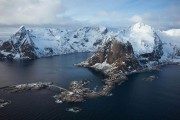Protecting Endangered Animals,保护濒危动物英语作文80词带翻译
Endangered animals are those that are in danger of extinction due to habitat destruction, climate change, and other human activities. These animals play a crucial role in our ecosystem, and their loss would have negative implications for our health and well-being. Therefore, it is our responsibility to take action to protect them.
One of the most effective ways to protect endangered animals is to conserve their habitats. Habitat conservation involves protecting the animals' natural habitats from destruction or pollution. By preserving their habitats, we ensure that the animals have a safe and secure environment in which to live and breed.
Another important way to protect endangered animals is to implement species reintroduction programs. These programs involve releasing animals back into the wild that have been bred in captivity or have been rescued from the brink of extinction. By increasing the population of these animals, we can help to ensure their survival and the health of our ecosystem.
Moreover, education and awareness are crucial in protecting endangered animals. We need to educate people about the importance of conserving habitats and species diversity, and about the negative implications of activities that contribute to the extinction of these animals. By raising awareness and encouraging everyone to take action, we can create a more compassionate and sustainable future for all creatures.
Finally, international cooperation is essential in protecting endangered animals. Many of these animals have no borders, and their conservation efforts require the cooperation of multiple nations. By working together, we can ensure that these animals receive the protection they need from all corners of the globe.
In conclusion, protecting endangered animals is not just the responsibility of conservationists or governments; it is our responsibility too. By taking action to conserve habitats, implement species reintroduction programs, educate and raise awareness, and work together internationally, we can help to ensure that these animals survive and thrive for many years to come.
Endangered animals are those species that are at a high risk of extinction in the near future. These precious lives are an integral part of our planet's biodiversity and ecological balance. The importance of protecting endangered animals cannot be overstated, and it is a responsibility that lies with each and every one of us.
The loss of endangered animals would have far-reaching consequences for our ecosystems. Many of these species play crucial roles in maintaining the stability and functionality of the natural environment. For example, certain predators help control the population of their prey, preventing overgrazing or overpopulation that could disrupt the food chain. Some animals are also important pollinators or seed dispersers, which are essential for the growth and reproduction of plants. Without them, entire ecosystems could collapse, affecting not only wildlife but also human livelihoods and the well-being of our planet.
The threats facing endangered animals are numerous and complex. Habitat loss due to deforestation, urbanization, and agricultural expansion is one of the primary reasons for their decline. As human activities encroach on the natural habitats of these animals, they are left with less and less space to live and breed. Pollution, including air and water pollution, also takes a toll on their health and survival. Climate change is another significant factor, altering the habitats and food sources of many species. Additionally, illegal hunting, poaching, and the illegal wildlife trade pose a serious threat, driven by the demand for rare and exotic animals and their parts.
To protect endangered animals, we need to take a multi-faceted approach. Conservation efforts should focus on preserving and restoring their habitats. This involves setting aside protected areas such as national parks, wildlife refuges, and conservation reserves. These areas provide a safe haven for endangered species to thrive and reproduce. We also need to promote sustainable land use practices that minimize the impact on wildlife habitats. This includes using eco-friendly farming methods and avoiding deforestation whenever possible.
Education and awareness are crucial components of the fight against the extinction of endangered animals. By informing people about the importance of these species and the threats they face, we can inspire them to take action. Schools, universities, and community organizations can play a vital role in educating the public, especially children, about the need to protect wildlife. Public awareness campaigns can also help raise funds for conservation projects and generate support for stronger legal measures to combat illegal activities.
Strengthening legal protection is essential. Governments should enact and enforce strict laws and regulations to ban hunting, poaching, and the illegal wildlife trade. International cooperation is needed to crack down on cross-border trafficking and ensure that these laws are adhered to globally. Penalties for violating these laws should be severe to act as a deterrent. At the same time, we need to invest in law enforcement agencies and conservation organizations to enhance their capacity to monitor and protect endangered animals.
Scientists and researchers also have a crucial role to play. Through studies and research, they can gain a better understanding of the behavior, biology, and needs of endangered species. This knowledge can then be used to develop effective conservation strategies and management plans. Conservation breeding programs can help increase the population of endangered animals in captivity and provide a source for reintroduction into the wild when conditions are suitable.
Each of us can make a difference in protecting endangered animals. Simple actions such as reducing our consumption of products that contribute to habitat destruction, supporting sustainable tourism that respects wildlife, and choosing not to buy products made from endangered species or their parts can have a significant impact. We can also volunteer with conservation organizations, participate in wildlife surveys and monitoring, or donate money to support their work.
In conclusion, protecting endangered animals is not only our moral obligation but also essential for the long-term health and stability of our planet. The loss of these precious species would be a great tragedy, not only for the animals themselves but also for future generations. By working together, through conservation efforts, education, and individual actions, we can ensure that endangered animals have a fighting chance and that our planet remains a rich and diverse home for all life. Let us all take up the responsibility of protecting these vulnerable creatures and safeguard the beauty and diversity of our natural world.
We must remember that every species has a right to exist and that we are all interconnected in the web of life. The survival of endangered animals is not just about saving individual species; it is about protecting the entire ecosystem and the future of our planet. It is a task that requires our collective commitment and dedication. So, let us act now and make a positive difference in the lives of endangered animals and the world we share.




